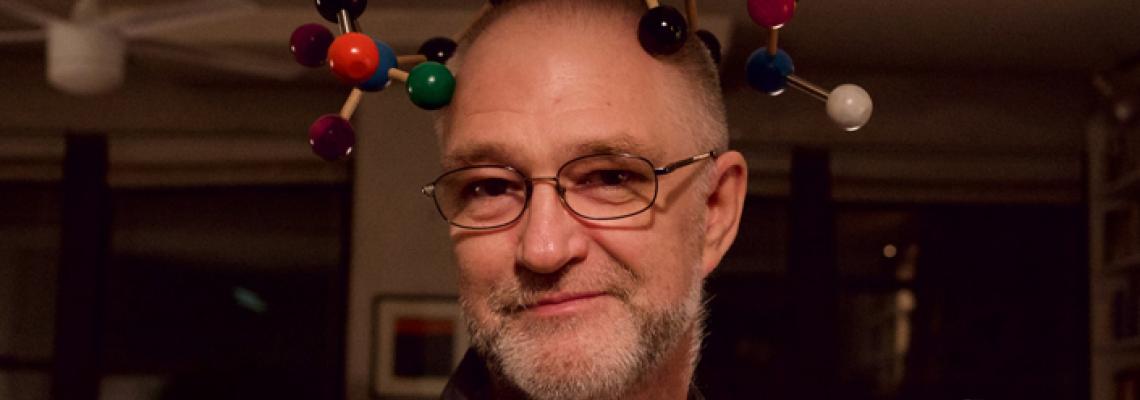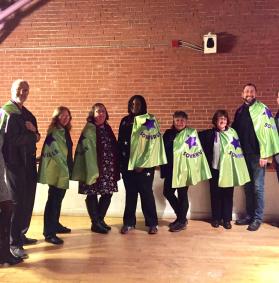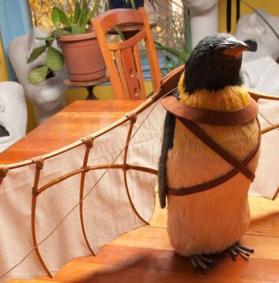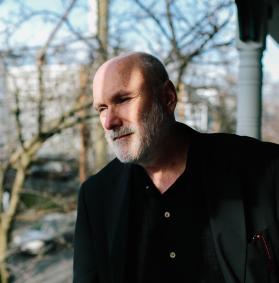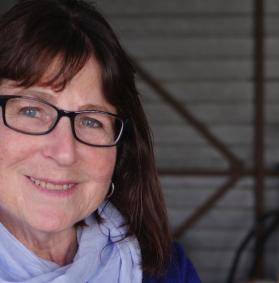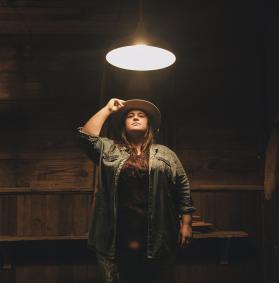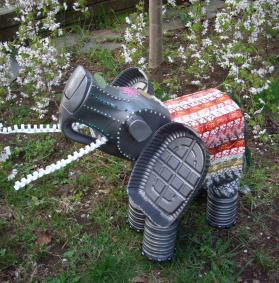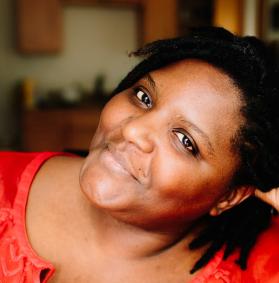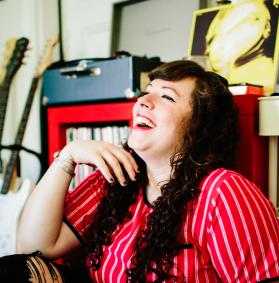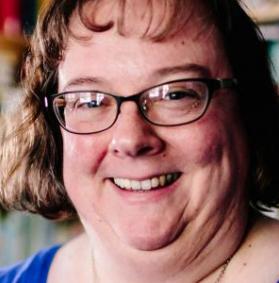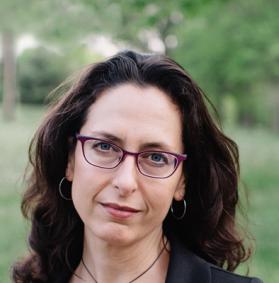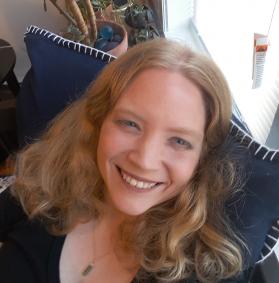Interview with Pier by Matt Kaliner; photos by Lee Kilpatrick
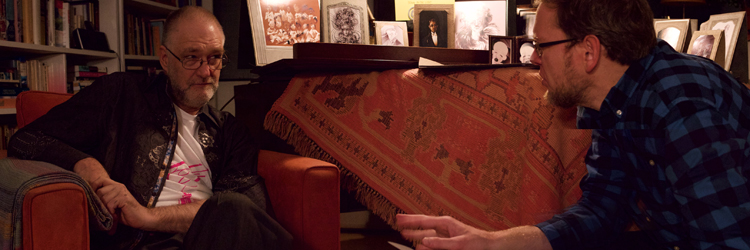
Pier Gustafson is one of the original artists who moved to Brickbottom Studios in 1986, where he has lived and produced art since. Please find more information about his work on his website here:
http://www.piergustafson.com/
What do you do?
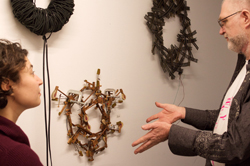 I am a graphic designer, an illustrator and a calligrapher, all in one. I design maps and monograms and tattoos, I draw portraits of houses and portraits of pets, for stationary, cards and awards.
I am a graphic designer, an illustrator and a calligrapher, all in one. I design maps and monograms and tattoos, I draw portraits of houses and portraits of pets, for stationary, cards and awards.
I take a perfectly good blank piece of paper and I cover it with stuff. The act of covering it is really kind of fun. I have sketchbooks full of doodles and little tiny marks. Part of the work comes from a love of pens; I love just using a pen and taking the sketchbook around with me. It's just kind of fun to doodle.
What are some projects you’d like to talk about?
 Much of my work is with clients, often through middlemen like wedding planners or retailers. About one third of my projects come through people I’ve worked with before, who are often middlemen who want to me to create something for their own clients. One third is word of mouth, say, a bridesmaid from a wedding I drew for. The last third are people who find me on the Internet, from all over the country.
Much of my work is with clients, often through middlemen like wedding planners or retailers. About one third of my projects come through people I’ve worked with before, who are often middlemen who want to me to create something for their own clients. One third is word of mouth, say, a bridesmaid from a wedding I drew for. The last third are people who find me on the Internet, from all over the country.
When I work with clients, I try to be as creative as I can. But, once the project is done there’s often an idea that’s gnawing at me. To get the idea out of my system, I often do it again, to explore alternative ideas I couldn’t show the client. In many cases, these are examples that I use on my website. This is how I get to be a bit more creative and maybe edgy, too.
For instance, I had a really fun time doing a whole group of book plates. I had done a couple book plates for clients. And we had a show at a gallery called Feast, so what i did was try to imagine all the different people involved in cooking, and I came up with book plates for each of them - chefs, waiters, restaurateurs, food critics, etc. I had made one or two before, and a few since, but none had been as fun what I did for these imaginary people. For instance, I did one for Lizzie Borden, "On the Borden Farm, we grow and slaughter our food." And it was a pitchfork, an axe and a shovel and then a spoon a fork and a butter knife.
How did you come to Somerville?
I moved to Boston from graduate school, when I was 28 thinking it would be a stepping stone to New York. A friend of mine invited me. I was originally from Minnesota, Bloomington. I came out here and ended up liking it. I was doing 3 dimensional paper sculptures. I had a gallery, Gallery NAGA, and I was also a waiter in the Museum of Fine Arts. An artist friend was part of this group that was looking for a building. They asked if I would join. Once we found it, we moved here, to Brickbottom. That was 1986. I was only here a couple years before moving in. We just had our 30 year anniversary in Brickbottom.
How has Brickbottom changed?
We're getting older. I feel like some of the issues that we had when we were 30 have changed now that we're 60. People who were single and unmarried now are married with kids - some may even have grandkids now. A lot of people have grown out of the spaces that they originally lived in, so it's just their studio or just their living space, not mixed-use space like originally.
Tell me about Brickbottom Open Studios. Your studio is always a hub of activity. How do you prepare for it?
I think for months in advance about what do I want to show and how do I show during Open Studios. Do I want to change my floor plan a little bit, change where I sit? I draw floorplans – I have 30 years of floorplans. Normally, I can sit four or five people to meet with me, but it gets really crowded so for open studios, I have to put everything in boxes and move it out. It is traumatic for me. Part of the problem is that I have ten times more stuff than my house is supposed to have. Many artists might show a new selection of art, but I move all the furniture around, move my stuff out, create new ways for people to experience the work.
It sounds stressful?
Open studios is traumatic for a lot of people, not just because they open their studios but we at Brickbottom open our homes. We have to clean it up, childproof it – it’s like welcoming a thousand people into your homes. We are also concerned about security – showing things of value.
What do you get out of Open Studios?
It allows me a time to reflect over what I’ve produced in the last year. As I look through things, and see art I made 20 years ago, I see how I’ve changed and matured and maybe become more or less clever. It’s nice to look at what I’ve done in the past, and look at new work. I also like to throw a party afterward, and so I clean the whole apartment. It’s how I celebrate another year of creating art. The whole event is like a celebration of creating art.
It’s somewhat good because I maybe sell art that I’ve already made or maybe get a new client. But what’s really good is meeting people who want to talk. This doesn’t happen at a gallery – open studios is not as intimidating as a gallery. At open studios, partly because you are invited into their house or studio, you’re invited into seeing how the sausage is made. You’ve already jumped over a particular hurdle, and are ready to talk to the artist. The artist is showing you their studio, they are letting you in on the magic. The artist is allowing you to look at how they make something. Visitors can ask you questions that wouldn’t work in a gallery, sometimes more personal, about the books on the bookshelf. Galleries have great value as well, but that’s a very different kind of experience. The artist showing it in your studio benefits from it because of the interesting conversations that happen. Visitors appreciate the art differently when you see it on the studio wall. I used to like to think about seeing art in its natural habitat. You’re seeing it in the natural habitat where it’s made, but not where it’s ultimately hung.
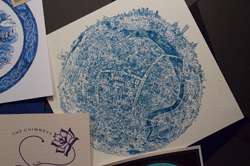 When did you get into calligraphy?
When did you get into calligraphy?
What I do is the lovechild of handwriting and calligraphy. My dad has really interesting handwriting and my mother did calligraphy for the church that we belonged to so I was always interested in interesting lettering, but I've never really studied it - I've never taken classes. I know what I like, and I enjoy playing with it, but I'm not a scholar of calligraphy. I like to think I write beautifully. I'm just exploring different kinds of penmanship.
I’ve sold pens for 30 years to many different people – I used to fix and sell fountain pens, as a business. I loved looking at handwriting, whether they were artists or calligraphers or students it was always fascinating looking at people’s handwriting. Some people have really expressive handwriting, really curvy. In my own work, I try to make it look like interesting penmanship, rather than formal calligraphy.
What are your thoughts on being an artist in Brickbottom or Somerville? How are you inspired by the area?
Brickbottom is a lovely little oasis of creativity and it's nice to be inspired by what other people are doing. We may not do things collaboratively very much but we do unintentional cross pollinate. I see something, I like what they're doing. I never thought about this that way, so now I can try it.
I grew up in a suburb in Minnesota, and although the family lot wasn’t that big, you couldn’t see our neighbors. When I first moved to a city, I couldn’t believe living in a place where people live so close. When I came to Somerville, it was amazing to look at a house and see three or four houses deep, with their yards and laundry and Virgin Mary shrines and so much else – that’s really fun as an artist. When I explore on my bike, it’s not so much the individual homes but the motley assortment and the denseness that’s attractive. I’ve started to draw telephone poles and Virgin Mary’s, and how they are placed against chain link fences, houses, asphalt, front lawns – it’s great fun to sketch.
Everything you do is drawn, not printed. What is your process?
I sometimes use this app on my Ipad that records my process, called Sketchclub. You see how I draw: I don't draw from left to right or top to bottom. I move around the page. Whether I'm drawing the figure or a landscape or map.
You do so many different things, what's a typical day?
I wake up early. 4:30 am is luxuriously late for me. I've got a cat, and I wake up when he wants to wake up. I work very well in the morning and around 2 o'clock I hit my first wall, and then it's very hard to get anything done from there.
Any final thoughts on living in Brickbottom and being creative here?
The problem with living in Brickbottom is that you are never away from work. It's always in your face, on the couch that you want to take a nap on, or the job you haven't finished - it's always right there. It's generally bad. However, I generally like my work.
